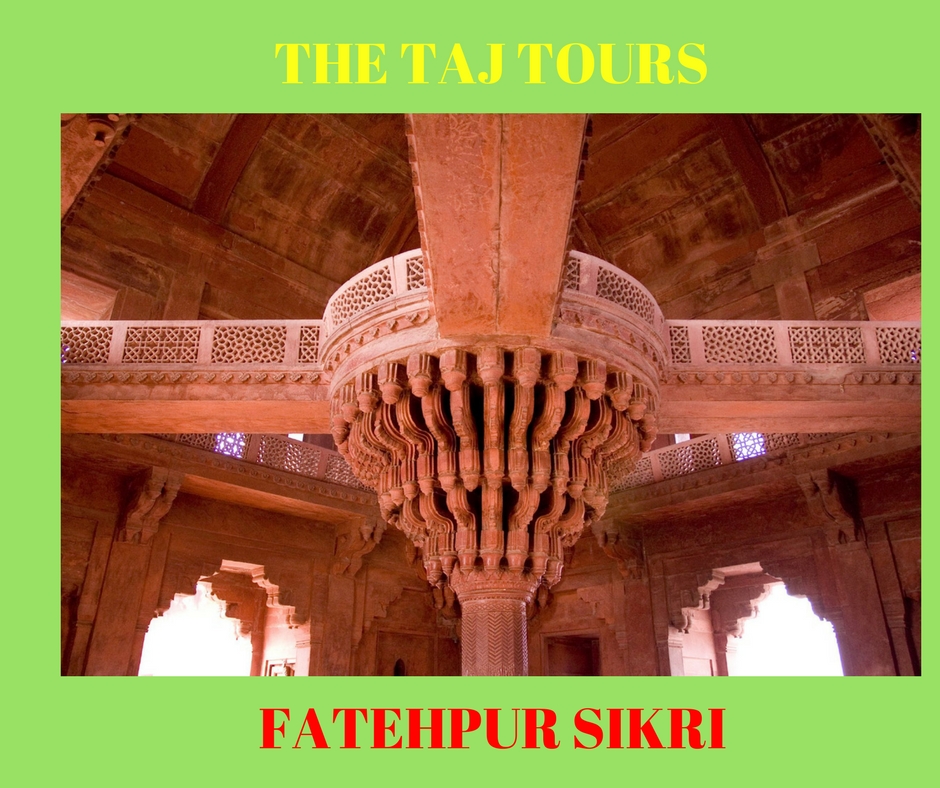Fatehpur Sikri World Heritage Site Agra
Fatehpur Sikri Agra was inscribed in the list of World Heritage Site. Made of red sandstone and adorned with stunning architectural grandeur, this wonderful tourist spot is regarded as the first planned city in Indo-Islamic style.
Fateh means Victory, Pur means city and Sikri is the word derived from a local tribe living around. Akbar initially did not have heir. While he was ruling from Agra Fort, he heard about a famous saint Sheikh Salim Chisti. And he heard that after seeking his blessings he would be blessed with a son. It is said that Akbar walked bare foot for 40 kilometres to meet the saint. The sufi saint blessed Akbar and said that he would be blessed with not just one but three sons.
On 30th August 1569, Akbar was blessed with a son. In order to honor the saint, Akbar named his son as Salim. In order to commemorate the birth of the son, Akbar started the construction of Fatehpur Sikri in 1569 to 1573. The city is perched atop a rocky ridge and there are wonderful constructions of similar designs across the city. Most of the buildings have similarity in their architectural style. The city is guarded on three sides by high walls, towers and there are seven gates. The buildings in the compound are divided into three parts- Administrative, Residential and Religious buildings. Akbar being a liberal emperor inculcated architectural features of all the religions.
The Administrative section consists of Diwan-i-Aam or Hall of public Audience. It was a place where the emperor used to meet the common people. The second structure in this category was Diwan-i-Khas or Hall of Private Audience. It has a beautiful monolithic carved pillar. On the top of the pillar is the blossom lotus flower where emperor used to sit. Another building was Treasure House.
The Residential building consists of Panch Mahal, a five floor structure reflecting Buddhist pagoda. In front of Panch Mahal was Pachisi board, or Ludo board. The girls were dressed in four colors and they used to dance while going from one box to another. Akbar had many wives due to the political alliance with different kingdoms. He used to play it with then sitting on the top of Panch Mahal.
One of the wives of Akbar was Turkish Sultana. In front of her palace was Anup Talao where the famous singer Tansen used to sing for Akbar. Behind it was Kitchen and Khuab Gaha, the bedroom of Akbar. The residential area also consists of the Palace of Mariam. She is considered to be the Christian wife. The most elaborately decorated palace was that of Jodha Bai. She was the chief queen of Akbar and was the princess from Amber now Jaipur. Her name is controversial as per the historians.
Last part is the religious section also called Sheikh Salim Chisti Dargha. After the death of the sufi saint, his body was laid to rest at this place. It has beautiful marble screen work added by Emperor Shah Jahan. It also has Buland Darwaza, highest gate in the country. It was built to commemorate the Akbar’s victory on Gujarat.
Akbar built the city at the end of the 16th century and shifted the capital of the Mughal Empire from Agra to Fatehpur Sikri. The city was later inhabited by the Mughal rulers only for around 14 years and was left secluded due to scarcity of water.




